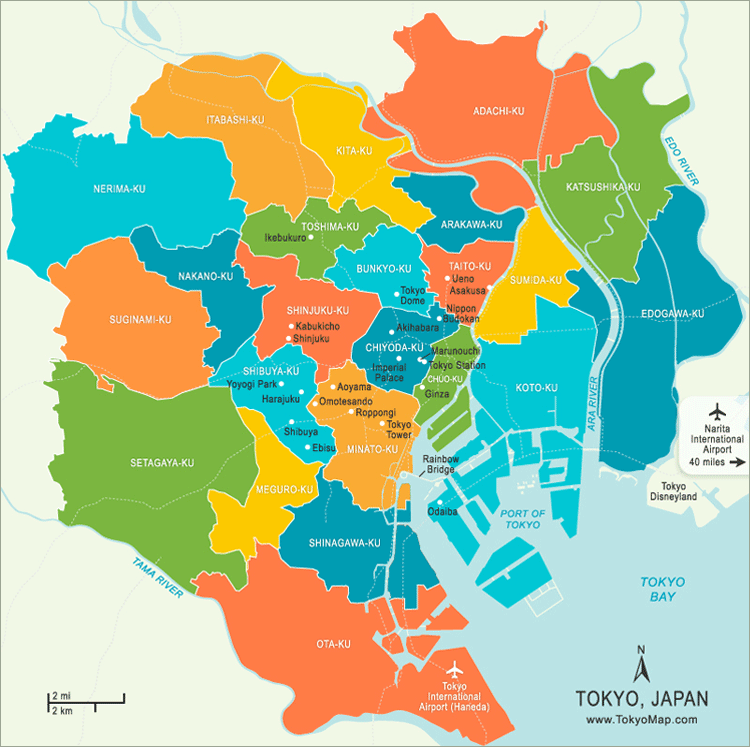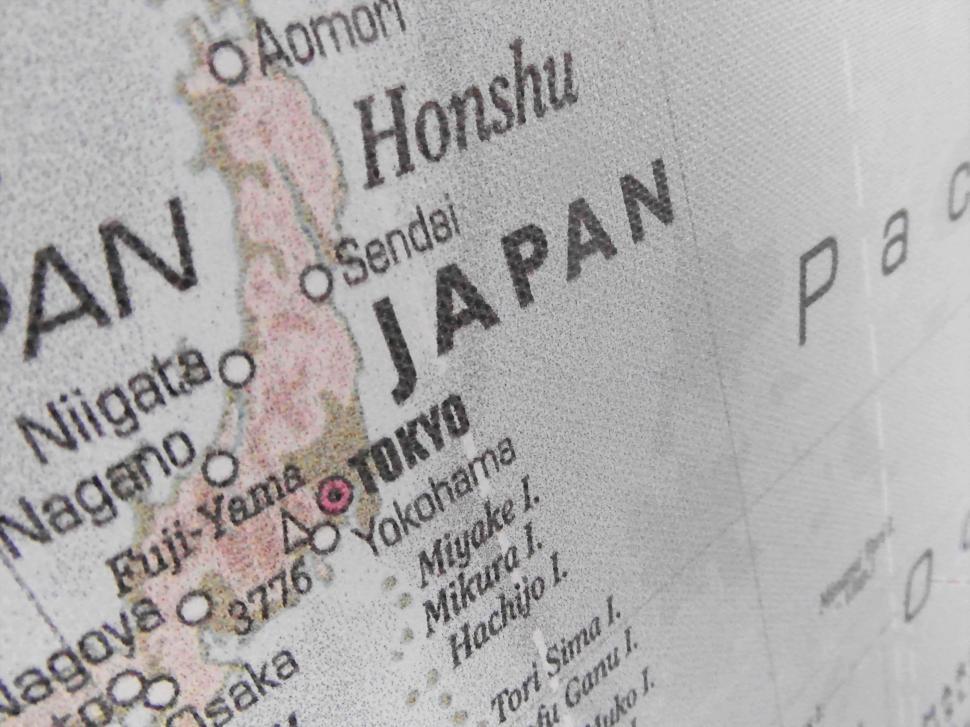
19 May The Average Renting Prices in Tokyo (Some worth paying for…)
Last Modified on June 13th, 2022 at 07:10 am
Category: Housing, Living, Renting in Japan, Tokyo Apartments, Uncategorized
Choosing where you want to live is the first step of apartment hunting in Tokyo. It will have a huge impact not only on your quality of life, but also on how much you can expect to pay in rent. We look at average prices in the central 23 wards to help you find the best value for your priorities.
Every year, the National Association For Real Estate Transaction Guaranty publishes data on rents in Tokyo by neighborhood and number of rooms. Before we dig into the numbers, you’ll need a quick primer how floor plans are listed. You may have seen designations like 1LDK or 2DK. This shorthand indicates the number of bedrooms and the basic floor plan. L is “living room”, D is “dining room”, and K is “kitchen”.
The data from the NAFRETG separates apartments into 5 loose categories based on these designations: studios, 1K/1DKs, 1LDK/2K/2DKs, 2LDK/3K/3DKs, and 3LDK/4Ks and up. For our purposes, let’s have a look at that middle group: mid-sized apartments spanning one bedrooms with a large living/dining/kitchen space up to two bedrooms with no living room.
Bargain hunting
Katsushika, Adachi and Edogawa round out the top three cheapest area in Tokyo’s central 23 wards. The three neighborhoods are found in the northeast edge of the city, across the Sumida and Arakawa Rivers from the historic tourist district of Asakusa. That should give you some hint as to why apartments there are priced so competitively: it’s a fairly long commute. Even if you are working on the east side of town, say around Tokyo Station in Marunouchi, you’re looking at least 30 minutes one way. Not egregious by Tokyo standards, but not exactly quick either.
The other reason rents in those neighborhoods are relatively low is they tend have a lot of older buildings. They can be great places to live if you want to experience the shitamachi (old town) atmosphere, with more traditional businesses (Think handmade tofu shops and retro coffee bars.) and a slower pace of life. You can also get more floor space for your budget if that’s a priority. However, if you are looking for a brand-new place with all the latest amenities and access to trendy shops and restaurants, these neighborhoods are probably not for you. See City guide.

At the center of the action
At the other end of the spectrum are Shibuya, Chiyoda and Minato. Rents in these neighborhoods are nearly double what you’d pay in the old town, but in return you get better access to Tokyo and generally more modern buildings.
Shibuya Station, home of the famous Scramble Crossing, is the vibrant heart of the ward, providing numerous convenient connections to the rest of the city. Shibuya-ku is where several of the most popular international schools in Tokyo are located, along with the fashion meccas of Omotesando and Harajuku and the sprawling green space and events hub of Yoyogi Park. Among our clients, some of the most popular residential areas in Shibuya Ward are Hiroo, Daikanyama, Sendagaya and Shoto. For more information, check out our handy neighborhood guide.
Chiyoda Ward is an economic and political powerhouse, encompassing the financial districts of Otemachi, Marunouchi and Yurakucho, the Imperial Palace, and a raft of government institutions including the Diet, the Supreme Court and the Prime Minister’s offices. More recently, tech, manga, and maid cafe hotspot Akihabara has become an international draw. Whichever world you belong to (or both!), Chiyoda is prime real estate. The areas around Hanzomon and Jimbocho Stations can be good areas to look for quieter apartments away from the hurly burly of the bigger stations.
And coming in at most expensive are the coveted properties in Minato, a ward that really has it all. A mix of unique residential and commercial districts, international Minato is where you’ll find the headquarters for many major domestic and international firms, a large number of embassies, and several international schools. Accordingly, it has the most English language services of any ward, an endless array of fine-dining options, and plenty of luxury apartments suited to Western tastes. There are over 30 train stations spanning 10 different lines, and a bustling arts and nightlife scene centered around the Roppongi area. Many of the most desirable neighborhoods in Tokyo, among expats and Japanese alike, can be found in Minato, including Azabujuban, Konan, and Shirokane. You pay a premium for living there, but the best of Tokyo is never far from your door.

So where to?
Of course, when it comes to choosing an actual apartment, a great many factors will influence the monthly rent. Distance to the station, age of the building, which way the windows face, whether the building has parking, the makeup of the neighborhood, whether it allows pets… the list goes on and on. So while the average rents per ward can give you a ballpark idea what to expect, remember there’s some flexibility too. If you know what your priorities are, a knowledgeable agent can take these various factors into account to find a place that meets your needs and your budget. And we’re happy to help with that! Feel free to reach out via our contact page if you are planning a move.

Need to ask more questions? sure! — check our profile for info.
Don’t forget to add us on LINE apts.jp. (@apts.jp) for consultation.
Articles you may also be interested: